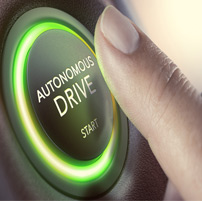Autopilot Buddy Dangers
July 12, 2018 The Autopilot Buddy is two pieces of plastic with magnets, which attach to the Tesla steering wheel, in order to trick the vehicle’s driver-assist system into thinking that a driver has his or her hands on the wheel. Tesla’s autopilot system will only work if it detects sustained pressure on the wheel. When it does not detect the required pressure, it will flash and give warnings before eventually disabling itself.
The Autopilot Buddy is two pieces of plastic with magnets, which attach to the Tesla steering wheel, in order to trick the vehicle’s driver-assist system into thinking that a driver has his or her hands on the wheel. Tesla’s autopilot system will only work if it detects sustained pressure on the wheel. When it does not detect the required pressure, it will flash and give warnings before eventually disabling itself.
Autopilot Buddy’s manufacturer, a 3rd party company and not Tesla, was recently hit with a cease and desist order from the National Highway Traffic Safety Administration (NHTSA). The NHTSA deputy administrator stated that the product is unacceptable, because it was developed with the intention of circumventing motor vehicle safety and driver attentiveness. She notes that the device could place all road users at risk, because it disables an important safeguard, namely the warnings advising the driver to put their hands on the wheel.
Why Autopilot Buddy?
The Autopilot Buddy was marketed as a ‘Tesla autopilot nag reduction device’. The Autopilot Buddy website notes that the old versions of Tesla’s Autopilot allowed drivers to enjoy hands-free autopilot for up to 30 minutes before receiving a reminder; whereas the updated version cut the time down to less than a minute “between nagging reminders”.
Tesla released the updates due to the increasing number of people succeeding in attempts to trick the original autopilot system. The updated software requires users to put their hands on the wheel; it “knows” whether a driver’s hands are on the wheel by detecting pressure. The Autopilot Buddy seems to be the most recent attempt to circumvent these autopilot safeguards.
Autopilot System Troubles
Tesla has recently come under scrutiny for its autopilot system, which caused several car crashes and at least three deaths. One fatal crash involved a man who was given visual and auditory alerts to put his hands on the steering wheel more than 15 minutes before he crashed. Investigations revealed that the driver did not have his hands on the steering wheel in the six seconds before the crash, and also that a navigation error by Autopilot contributed to the crash.
The vehicle began a left steering movement and increased in speed in the seconds before the accident. A consumer advocacy group noted that Tesla’s driver-assist program failed to keep drivers engaged when it was needed most, and it urged the company to fix the program.
In a statement, Tesla pointed out that a crash attenuator that had been damaged in an earlier car accident contributed to the severity of the crash. According to reports, the man’s family is currently exploring their legal options.
Baltimore Car Accident Lawyers at LeViness, Tolzman & Hamilton Represent Those Injured in Autonomous Vehicle Accidents
If you were injured in an autonomous vehicle accident, contact the Baltimore car accident lawyers at LeViness, Tolzman & Hamilton. We have been helping Marylanders get exceptional results in car accident cases for over 30 years. Call us at 800-547-4LAW (4529) or contact us online for a free, confidential consultation.
We represent car accident victims throughout Maryland, including those in Anne Arundel County, Baltimore County, Carroll County, Harford County, Howard County, Montgomery County, Maryland’s Western Counties, Prince George’s County, Queen Anne’s County, Southern Maryland, and the Eastern Shore, as well as the communities of Catonsville, Essex, Halethorpe, Middle River, Rosedale, Gwynn Oak, Brooklandville, Dundalk, Pikesville, Nottingham, Windsor Mill, Lutherville, Timonium, Sparrows Point, Ridgewood, and Elkridge.






